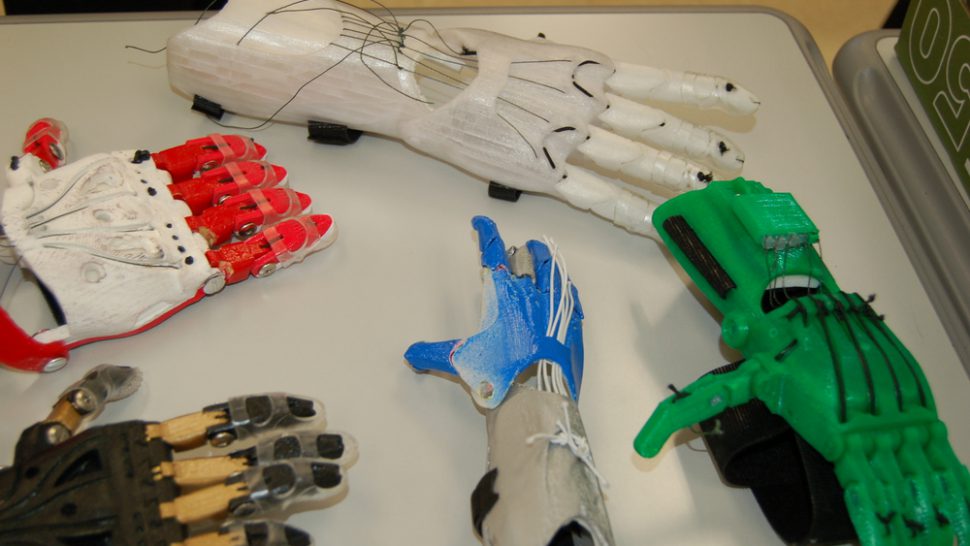Scott Smith, January 31, 2017
When it comes to innovation, the 3D printing of prosthetics is just one area where Big Ten schools are leading the way. More often that not, we think of prosthetics in terms of of adults. But a class of students at Penn State has teamed up with two organizations to create prosthetic hands and arms for kids.
Last fall, students in Alandra Kahl?s Introduction to Engineering Design class worked with assistance from Enabling the Future and the Prosthetic Kids Hand Challenge to create 3D-printed prosthetic hands and arms.
Both groups offer extensive tutorials and instructions – in print and video – on the creation of 3D-printed devices.
Initially born out of a desire to make a steampunk Halloween costume, Enabling the Future evolved into a project with ?nearly 7000 members and approximately 2000 devices created and gifted to individuals in over 45 countries.? The Prosthetic Kids Hand Challenge began as part of Dr. Chris Craft?s classroom work and now serves libraries, makerspaces and other collaborators with opportunities to create new mobility opportunities for kids.
Penn State?s Professor Kahl sees these kinds of group projects as crucial to preparing students for the world outside the classroom.
?I give my students group projects. Collaborative work is a great way for students to learn from each other and it also mimics engineering projects in the real world, as engineers frequently work in teams to solve problems.?
The hands cost approximately $50 through the 3D printing method, as opposed to the $15,000 cost of medical grade devices. They are ?donated to the organizations, which in turn, find recipients who were born missing fingers or who have lost them due to war, disease, or natural disaster.?







 Check out what's coming up next live on B1G+.
Check out what's coming up next live on B1G+. 